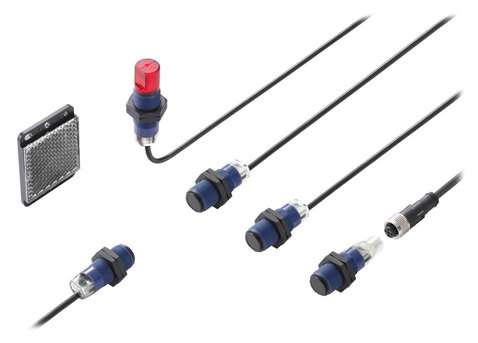Panasonic CY-111B-P-Z Sensor: Precision and Durability
What is the Panasonic CY-111B-P-Z Sensor?
The Panasonic CY-111B-P-Z is a photoelectric sensor specifically designed to meet precise detection needs in industrial automation systems. This device is suitable for various applications such as production lines, robotic systems, and logistics. Its high sensitivity, fast response time, and durability have made it a trusted product among users.
The CY-111B-P-Z sensor supports both PNP and NPN output types, enabling easy integration with different devices and systems. Its compact design and flexible mounting options make it ideal for even tight spaces, allowing it to function effectively in demanding industrial conditions.
CY-111B-P-Z Technical Specifications
The technical details of the CY-111B-P-Z are what make it stand out in industrial projects:
- Operating Voltage: 12-24V DC. The wide voltage range ensures compatibility with various systems.
- Detection Range: Between 10-20 cm, perfect for applications requiring high precision.
- Response Time: Fast response time allows it to detect even moving objects efficiently.
- Output Types: Supports both PNP and NPN options.
- Mounting Flexibility: Its compact size allows for easy installation in confined spaces.
- Durability: Resistant to dust, moisture, and high temperatures.
- Wiring: A simple and user-friendly connection diagram simplifies the installation process.
These specifications make the Panasonic CY-111B-P-Z sensor a reliable and long-lasting solution for industrial automation projects.
Applications
The Panasonic CY-111B-P-Z sensor has a wide range of applications and can be confidently used in different industries. Here are the main areas where this sensor excels:
- Production Lines: Controls material flow, detects product positions, and supports quality control processes.
- Robotic Systems: Provides data to guide the precise movements of robotic arms.
- Packaging Machines: Ensures accurate packaging processes by detecting products correctly.
- Logistics and Storage: Speeds up product placement and tracking operations in warehouses.
- Food and Beverage Industry: Delivers precise detection for hygienic and accurate product handling processes.
- Machine Automation: Optimizes machine control systems and boosts efficiency in production lines.
Thanks to its wide range of applications, the Panasonic CY-111B-P-Z sensor stands out as a versatile industrial solution.
Advantages of the Panasonic CY-111B-P-Z Sensor
The CY-111B-P-Z sensor is known for its numerous advantages in industrial automation projects:
- Precise Detection: Can detect small and complex objects, ensuring high performance in detail-oriented applications.
- Easy Installation: Compact size and flexible connection design allow for quick and hassle-free setup.
- Long-Lasting Performance: Its robust construction ensures reliable operation in demanding environments.
- Low Maintenance Cost: Durable materials reduce the need for frequent maintenance.
- Versatile Compatibility: Compatible with different systems thanks to PNP and NPN output support.
- Cost-Effective Solution: Offers great value with affordable pricing and long-term cost savings.
These advantages make the CY-111B-P-Z sensor a cost-effective and reliable choice for industrial projects.
Frequently Asked Questions
- 1. In which industries is the CY-111B-P-Z sensor used?
- The CY-111B-P-Z sensor is used in industries such as production, logistics, food and beverage, and robotic systems.
- 2. What is the detection range?
- The CY-111B-P-Z sensor has a detection range of 10-20 cm.
- 3. What are the output types?
- It supports both PNP and NPN output types.
- 4. Is installation easy?
- Yes, it features flexible connection options and a compact design for easy installation.
- 5. Is the CY-111B-P-Z sensor durable?
- Yes, it provides reliable performance even in harsh conditions like dust, moisture, and high temperatures.
- 6. Can it integrate with different systems?
- Yes, the CY-111B-P-Z sensor is compatible with a wide range of industrial automation systems.
Related Articles: Learn more about the future of industrial sensors by reading our blog on The Role of Sensors in Digital Transformation

